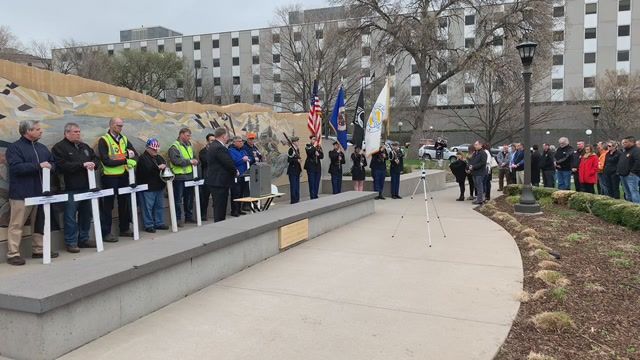

Share
At this year’s Worker’s Memorial day ceremony speakers made a call to action against, “hazards that cause unnecessary injury, illness, and death. ” Furthermore they asked that, “elected officials put workers’ well-being above corporate interests.”
online pharmacy purchase revia online with best prices today in the USA
Speakers highlighted new rules to protect workers from deadly silica dust and beryllium, a stronger coal dust standard for miners and stronger anti-retaliation protections for workers who report job injuries. These hard fight gains have been threatened by the policies of the Trump administration. A statement prior to the event explains that:
“The Trump administration has carried out an all-out assault on regulations, targeting job safety rules on beryllium, mine examinations, injury reporting, and child labor protections. The labor movement and allies have fought back and blocked some of these attacks. However, this assault has taken a toll: Key protections have been repealed or rolled back and agency budgets and staff have been cut. There has been no action on critical safety and health problems like workplace violence, silica in mining and exposure to toxic chemicals.”

Recently a report released by the AFL-CIO indicated that Minnesota had the 28th highest rate of workplace deaths in 2017. This analysis, based on data from the Bureau of Labor Statistics, shows that 101 Minnesota workers lost their lives due to on-the-job injuries, resulting in 3.5 deaths per hundred thousand workers.
“This year’s report is yet another reminder of the dangers facing working people in Minnesota every single day,” said Minnesota AFL-CIO President Bill McCarthy. “Working people deserve better. We have a right to a safe workplace and a voice on the job.
The report, titled “Death on the Job. The Toll of Neglect” marks the 28th year the AFL-CIO has produced its findings on the state of safety and health protections for workers within the United States. The report shows that nationally, workplace violence is now the second-leading cause of workplace death, accounting for 807 workplace deaths, including 458 homicides. For the 3rd year in a row, workplace violence injuries increased, with nearly 29,000 workers suffering serious violence-related injuries due to assaults on the job. Yet, even as violence increases in the workplace, the Trump administration has sidelined developing and issuing an OSHA workplace violence standard.
Other report highlights show that Latino workers continue to be at increased risk of job death and that the number of Latino worker deaths increased in 2017 to 903 from 879.
online pharmacy prednisone over the counter with best prices today in the USA
Deaths among older workers also increased; workers 65 or older have nearly three times the risk of dying on the job as workers overall.
Construction, transportation and agriculture industries remain among the most dangerous. In 2017, 917 construction workers were killed—the highest total of any sector. Agriculture, forestry, fishing, and hunting was the most dangerous industry sector, with a fatality rate of 23.0 per 100,000 workers.

